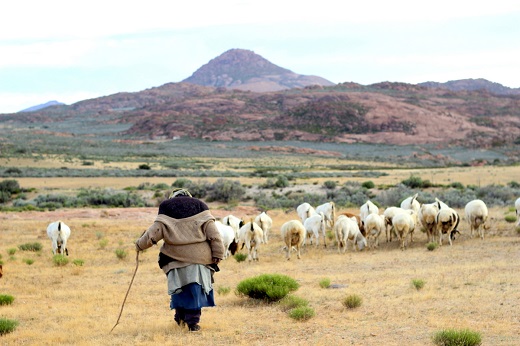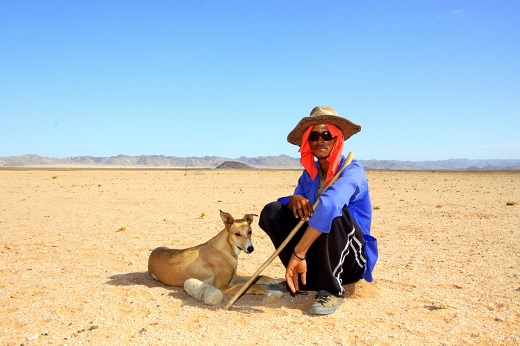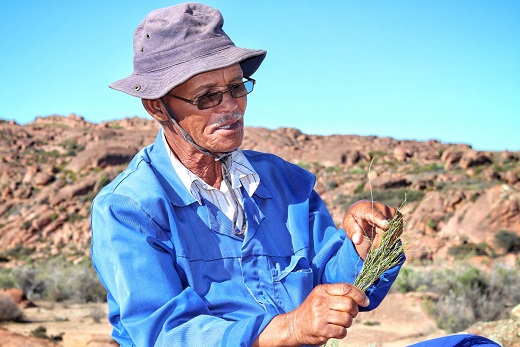Fieldwork photos of walking with herders in Namaqualand
On 10 September, Dr William Ellis (University of the Western Cape, South Africa) gave an intriguing webinar, entitled 'Walking with herders: Animal and plant ontologies in Namaqualand'. Dr Ellis talked about his project with Nama pastoralists in the dry arid regions of the Northern Cape, South Africa, where he and his research group have been walking with herders and learning from them literally 'on the hoof'. Instead of the sit-down-interview where the researcher leads discussions and drives the interaction, walking ethnographies with herders attempt to shift this power dynamic between researcher and researched. The form has produced novel research data and has begun a recasting of the expertise and experience of the herders.
As part of the webinar, Dr Ellis showed a number of photos of herders and animals in their environment, taken by Clement Cupido of the Agricultural Research Council (also based at UWC) during the walking ethnographies. Take a look at these magnificent photos and read the stories about the herders. (Photos courtesy of Clement Cupido).

Aunt Duifie, one of the few female herders, walks with her herd to the khaya (shelter) at her and her sister's stockpost near the Leliefontein village. At the time when the picture was taken both she and her sister were in their eighties. They are retired now and moved back to the village.

This picture is taken in the Bushmanland area during a drought period. This is a summer rainfall area and the land is denuded of grasses because of the drought and grazing. Dogs play an important role in the lives of herders, not only to protect the livestock from predators, but also for companionship. In the intense heat the dog has taken shade in the shadow of the herder.

This is Oom Barnie Links. His full name is Barnabas Shaw Links, named after the missionary Barnabas Shaw who planted the historic Methodist church in Leliefontein. Oom Barnie is an experienced herder and a keen botanist. In the picture he points to one of the key grazing plants in the Kamiesberg upland.

On a sweltering day when the temperature was above 40C in the Bushmanland, a ewe gave birth to a lamb. The herder comes to the rescue and takes the lamb to safety in the shadow of a water pump. He carries the lamb by the front leg to prevent his scent from rubbing onto the lamb (ewes normally reject lambs if they detect human scent). Herders in the Bushmanland normally do not have a ram camp to seperate them from the ewes. This particular lamb was therefore born at the 'wrong time'.

This picture is taken in the winter rainfall area, west of the Bushmanland. These boergoat lambs were born at the 'right time'. The veld is lush and there is enough forage for the ewes to stay in good condition and to provide milk for the lambs. This is the most difficult time of the year for this herder, who needs to stay behind with the twins while keeping an eye on the rest of the flock. The twins need to be carried back to the stockpost by the herder. Multiple births on one day will make the task of the herder even more difficult.
See more photos by Clement Cupido in the series 'Sketches from Namaqualand and beyond' (pdf).

